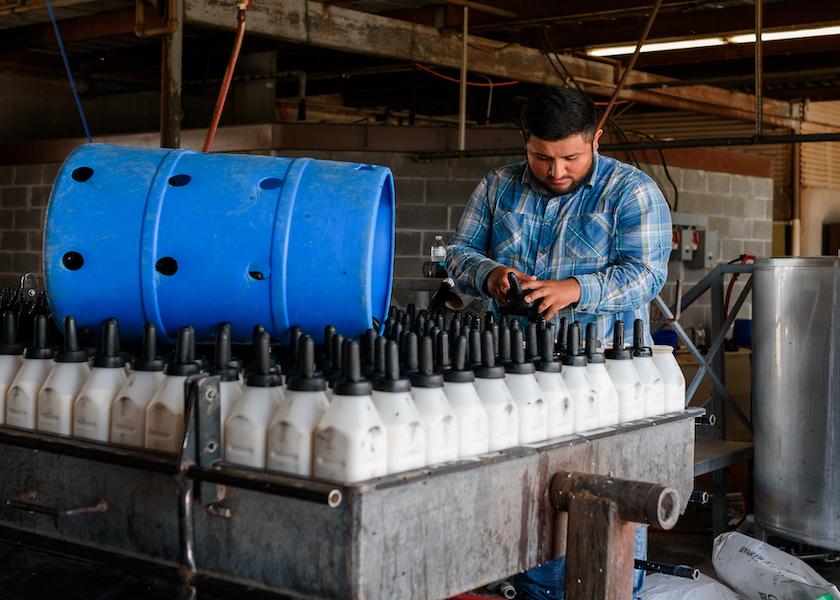High-Protein Starter Improves Dairy Calf Weight Gain, Reduces Slumps At Weaning

New calves fed more than the traditional 1.25 pounds of milk replacer or 4 quarts of milk can benefit from being fed a starter with a high percentage of crude protein (CP), according to research conducted at the University of Illinois and published by the Journal of Dairy Science.
“As there are a number of 22% CP starters on the market, we think this is a suitable level in the absence of more closely titrated studies,” says James Drackley, PhD, a professor in the Department of Animal Sciences and co-author of the study.
Drackley explains that the higher level of protein supports the development of the gastrointestinal system, especially important as calves go through the weaning process.
“We often think about starter as providing energy for rumen development, but we need to remember that it becomes the primary source of protein for the calf as well,” he adds. “This may be particularly important when calves are coming off high amounts of milk or high-protein milk replacer and growing rapidly.”
Study protocol summary: Drackley and his co-authors started two-to-three-day-old calves on one of three experimental diets: a low rate of milk replacer + conventional starter (18% crude protein, as-fed basis); a high rate of milk replacer + conventional starter; and a high rate of milk replacer + high crude-protein starter (22% crude protein, as-fed basis). Additional protein in the high-protein starter was provided by soybean meal, compared with conventional starter, which was a mixture of wheat middlings, soybean meal, and corn, among other ingredients. The calves were weaned at six weeks of age and were harvested at five or 10 weeks to determine body composition, according to a university distributed news release.
To evaluate the success of using a starter with a high percentage of crude protein, Drackley says to consider more than body weight gain alone. “I would look for how calves adjust to weaning from high amounts of milk or milk replacer,” he says. “For example, we would expect less slumps in growth through weaning for calves that have a more well-developed digestive system.”
Study results also showed that calves fed the higher protein starter grew more rapidly than their counterparts and had more lean tissue with less fat.
The article, “Influence of starter crude protein content on growth and body composition of dairy calves in an enhanced early nutrition program,” is published in the Journal of Dairy Science [DOI: 10.3168/jds.2020-19580]. Authors include Jennifer Stamey Lanier, Floyd McKeith, Nicole Janovick, Rodrigo Molano, Michael Van Amburgh, and James Drackley. Funding was provided in part by Milk Specialties Company and the Illinois Agricultural Experiment Station.







